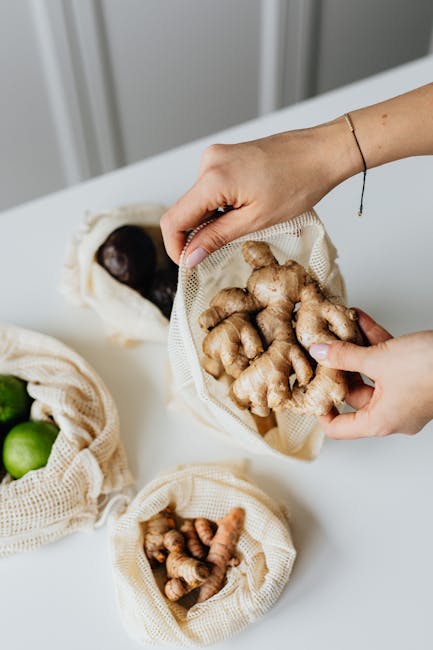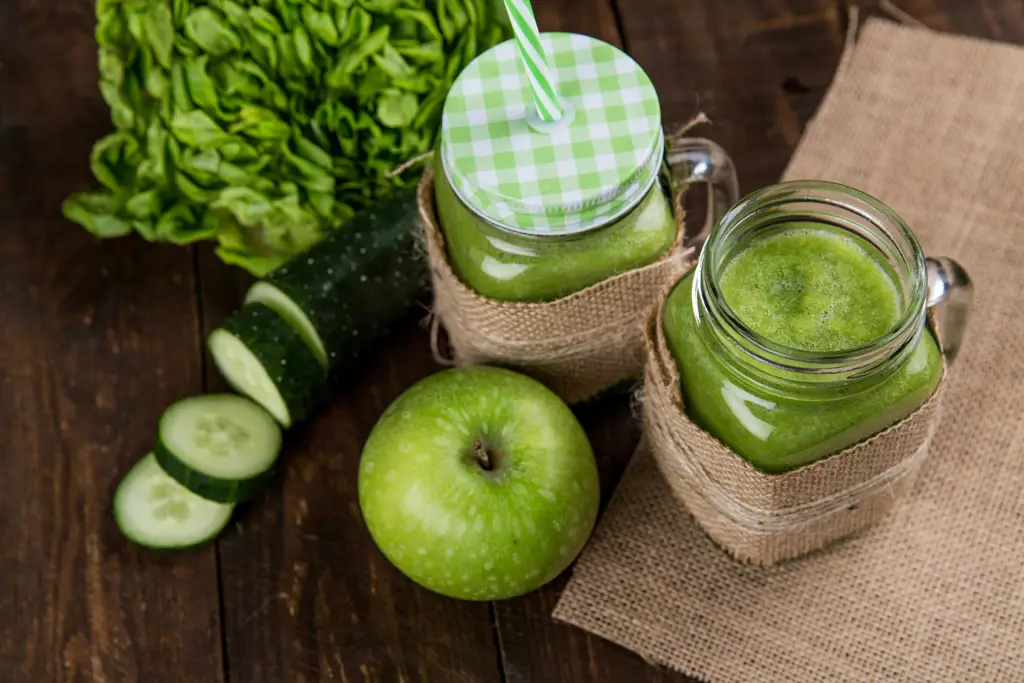The vibrant green hue of an avocado smoothie instantly evokes feelings of freshness and health, but the journey of this popular beverage is far richer than its simple appearance suggests. While pinpointing the exact origin of avocado smoothies is difficult, their rise in popularity is intrinsically linked to the growing awareness of the avocado itself. Avocados, originating in Mexico and Central America, have a history stretching back thousands of years. Archaeological evidence suggests their cultivation began as early as 7000 BC, with the fruit playing a significant role in the diets and cultures of ancient civilizations in the region. These early cultures likely consumed avocados in various forms, including simple preparations that may have laid the groundwork for today’s smoothies.
The avocado’s journey from the ancient world to modern kitchens is a testament to its versatility and nutritional value. It wasn’t until the 20th century that avocados truly gained widespread global recognition, largely due to increased trade and improved transportation methods. Their creamy texture and unique flavor profile made them a desirable ingredient in various cuisines worldwide. The rise of the health and wellness movement in recent decades has further propelled the avocado’s popularity, with its high fat content (mostly monounsaturated) being hailed as a good fat beneficial for heart health. In fact, a single medium avocado provides nearly 20% of the recommended daily intake of fiber and is packed with vitamins K, C, and B6, as well as potassium.
The cultural significance of the avocado extends beyond its nutritional benefits. In many Latin American countries, the avocado remains a staple food, deeply ingrained in traditional recipes and cultural practices. From guacamole to various savory dishes, the avocado holds a prominent position in the culinary landscape of these regions. The smoothie, a relatively recent addition to the avocado’s repertoire, reflects the global fusion of culinary traditions. It is a testament to the adaptability of the avocado, seamlessly integrating into modern diets and lifestyles. The smoothie itself is a product of a globalized world, drawing on diverse influences from different cultures while cleverly using the avocado’s rich nutritional profile to create a healthy and delicious beverage. Today, the global avocado market is a multi-billion dollar industry, a testament to this fruit’s enduring appeal.
This recipe for a healthy avocado smoothie aims to highlight the best aspects of this incredible fruit in a simple, yet delicious, form. We’ll explore the perfect balance of flavors and textures, creating a refreshing drink that’s both nutritious and satisfying. Prepare to unlock the full potential of the avocado, a fruit that’s both a culinary icon and a nutritional powerhouse.
Ingredients and Measurements
This recipe yields approximately 2 servings of a creamy, nutrient-rich avocado smoothie. The measurements provided are for a standard blender, but you can easily adjust them based on your blender’s capacity and your desired serving size. Remember to always use ripe avocados for the best flavor and texture.
Avocados: We’ll be using 1 large, ripe avocado (approximately 200-250 grams). The ripeness of the avocado is crucial. A perfectly ripe avocado will yield a smoother, creamier smoothie. To check for ripeness, gently squeeze the avocado; it should yield to gentle pressure without being mushy. Avoid avocados that are hard or have dark bruises.
Liquid Base: For this recipe, we recommend using 1 cup (240ml) of unsweetened almond milk. Almond milk provides a subtly sweet and creamy texture without adding excessive calories or sugar. However, you can substitute with other milk alternatives like coconut milk (for a richer flavor), soy milk, or even water if you prefer a thinner consistency. Note: Using water will result in a less creamy smoothie.
Frozen Fruit: Adding frozen fruit is essential for achieving a thick, cold smoothie. We’ll be using 1 cup (approximately 150 grams) of frozen mango chunks. Mango complements the avocado beautifully, adding a tropical sweetness and vibrant color. You can substitute with other frozen fruits like pineapple, berries (strawberries, blueberries, raspberries), or a combination of your favorites. Remember to use frozen fruit; fresh fruit will result in a less cold and potentially thinner smoothie.
Sweetener (Optional): While the mango and avocado provide natural sweetness, you might want to add a touch of extra sweetness depending on your preference. We suggest using 1-2 tablespoons of honey or maple syrup. Start with 1 tablespoon and add more to taste. Avoid using refined sugar; natural sweeteners are healthier options. Alternatively, you could use a ripe banana for natural sweetness and creaminess; simply substitute half an avocado with one medium-sized ripe banana.
Spinach (Optional): For an extra boost of nutrients, add 1 cup (approximately 30 grams) of packed fresh spinach leaves. Spinach adds a subtle earthy flavor that blends seamlessly into the smoothie and provides a significant amount of vitamins and minerals. It’s barely noticeable in the final product, making it a great way to sneak in extra greens.
Protein Powder (Optional): If you’re looking for a more protein-rich smoothie, you can add 1 scoop (approximately 30 grams) of your favorite protein powder. Choose a flavor that complements the other ingredients, such as vanilla or unflavored. Ensure your protein powder is unflavored or a flavor that complements the other ingredients to avoid clashing tastes.
Other additions (Optional): Feel free to experiment with other ingredients to customize your smoothie. A squeeze of lime juice can add a refreshing zing, while a pinch of cinnamon or nutmeg can add warmth and spice. Chia seeds or flax seeds can boost the fiber content. Remember to adjust the liquid amount accordingly if adding thicker ingredients.
Important Note: Always wash all fruits and vegetables thoroughly before using them in your smoothie. Adjust the amount of liquid according to your desired consistency. If your smoothie is too thick, add more liquid, a little at a time, until you reach your preferred texture.
Equipment Needed
Making a delicious and healthy avocado smoothie requires the right tools to ensure a smooth, creamy texture and easy cleanup. While you might already have most of these items in your kitchen, having the correct equipment will significantly enhance your smoothie-making experience. Let’s delve into the specifics.
A high-powered blender is paramount. Don’t underestimate the importance of this appliance. A standard blender might struggle to achieve the desired creamy consistency with the avocado’s dense texture. A high-powered blender, on the other hand, will effortlessly pulverize the avocado and other ingredients, resulting in a smooth, lump-free smoothie. Look for a blender with at least 1000 watts of power and a strong motor. Brands like Vitamix and Blendtec are popular choices known for their durability and performance, but many other excellent high-powered blenders are available at various price points. Consider the blender’s capacity as well; a 64-ounce capacity is ideal for making larger batches or multiple servings.
Measuring cups and spoons are essential for accuracy. Precise measurements are key to achieving the perfect balance of flavors and textures in your smoothie. Invest in a good set of measuring cups and spoons to ensure consistency in your recipe. A 1-cup measuring cup, a ½-cup measuring cup, and a set of measuring spoons (1 tablespoon, 1 teaspoon, ½ teaspoon) are sufficient for this recipe. Using accurate measurements will help you reproduce the same delicious results every time. Avoid using random containers or eyeballing the ingredients, as this can lead to inconsistencies in your final product.
A cutting board and a sharp knife are necessary for preparing the avocado. Choose a sturdy cutting board that is easy to clean. A plastic or wooden cutting board will do nicely. A sharp knife will ensure you can efficiently pit and chop the avocado without bruising the flesh. A serrated knife can also be helpful for cutting through the avocado’s skin. Remember to always handle knives safely and carefully. Wash your knife and cutting board thoroughly after use to maintain kitchen hygiene.
A sturdy spatula or spoon is helpful for scraping down the blender sides. During the blending process, ingredients can sometimes stick to the sides of the blender jar. A sturdy spatula or spoon, preferably made of silicone or rubber, will help scrape down the sides and ensure that all ingredients are thoroughly blended. This is particularly important for getting every last bit of that creamy avocado into the mix. Avoid using metal utensils in your blender jar, as these can scratch the surface and potentially affect its longevity.
Finally, you’ll need glasses or containers to serve your smoothie. Choose glasses or containers that are suitable for both hot and cold beverages, depending on your preference. If you plan on storing leftovers, select airtight containers to maintain the freshness and quality of your smoothie. Consider the size of your serving glasses to match the smoothie quantity you are preparing. Enjoying your delicious creation in a nice glass elevates the whole experience.
Preparation Phase: Washing and Chopping
Before we dive into blending our delicious and healthy avocado smoothie, let’s meticulously prepare our ingredients. This crucial step ensures a smooth, flavorful, and safe final product. We’ll focus on properly washing and chopping the key components: the avocado and any additional fruits or vegetables you’ve chosen to include.
Washing the Avocado: Avocados, like any produce, can harbor pesticides and soil residue. Thorough washing is essential. Begin by rinsing the avocado under cool, running water for at least 30 seconds. Avoid using soap, as it can leave behind residue that might affect the taste of your smoothie. Gently scrub the avocado’s skin with your fingers or a soft vegetable brush to remove any visible dirt or debris. Pay particular attention to the stem end, where dirt often accumulates.
Preparing Other Fruits and Vegetables (Optional): If your recipe includes other fruits or vegetables such as bananas, spinach, or berries, wash them thoroughly as well. For berries, gently rinse them in a colander under cool running water. For spinach or other leafy greens, submerge them in a bowl of cool water, swish gently to loosen any dirt, and then lift them out, allowing excess water to drain. Bananas should be peeled before adding them to the smoothie; however, rinsing the outside of the peel is still recommended.
Chopping the Avocado: The method of chopping your avocado depends on your preference and the type of blender you’re using. For most blenders, cutting the avocado into smaller chunks will facilitate smoother blending. First, cut the avocado in half lengthwise, following the natural seam. Twist the halves apart, removing the pit carefully with a spoon or knife (be cautious when handling the pit, as it’s very hard). Using a knife, slice the avocado flesh into roughly 1-inch cubes. For a particularly creamy smoothie, you can even chop the avocado into smaller, ½-inch pieces. The smaller the pieces, the less strain you’ll put on your blender motor.
Chopping Other Ingredients (Optional): The size of your other ingredients will also impact the blending process. For example, if you are adding frozen fruits like mango or pineapple, you may not need to chop them further, as they will already be in manageable pieces. However, if using fresh produce, chop them into similarly sized pieces as your avocado for even blending. For leafy greens like spinach, roughly chopping them into smaller pieces will prevent them from getting tangled in the blender blades. Remember, a consistent size for all ingredients promotes a smoother final product.
Quantity Considerations: The quantity of avocado you use will influence the creaminess and richness of your smoothie. A single medium-sized avocado (approximately 200 grams) is a good starting point for a single serving. If you prefer a thicker smoothie, add a larger avocado. Conversely, if you prefer a thinner, more liquid consistency, use a slightly smaller avocado or adjust the amount of liquid in your recipe accordingly.
Important Note: Once you’ve washed and chopped your ingredients, it’s best to proceed with blending immediately to prevent browning of the avocado and maintain its optimal flavor and nutritional value. If you must delay blending, store your chopped avocado in an airtight container in the refrigerator, but keep in mind that some browning might still occur.
Blending Instructions
Creating the perfect creamy and delicious avocado smoothie requires a bit of technique. Follow these detailed instructions for optimal results. We’ll be using a high-powered blender for this recipe, but a standard blender will work, potentially requiring a bit more blending time.
Step 1: Prepare your ingredients. Before you begin blending, ensure all your ingredients are ready. This includes washing and peeling the avocado, measuring out the other ingredients accurately, and having your blender ready to go. This will help streamline the process and avoid any mid-blend interruptions.
Step 2: Add the liquids first. Start by adding your liquid ingredients to the blender. For this recipe, we’re using 1 cup of unsweetened almond milk. However, you can substitute with other liquids like coconut water, milk (dairy or non-dairy), or even plain water. Adjust the amount of liquid depending on your desired consistency. If you prefer a thicker smoothie, start with less liquid and add more gradually until you reach your preferred texture. Conversely, if you prefer a thinner smoothie, add more liquid initially. Remember, you can always add more liquid, but you can’t take it away!
Step 3: Incorporate the avocado. Next, add one ripe avocado (approximately 1 medium-sized avocado, about 200g) to the blender. Make sure it’s ripe – a ripe avocado will blend seamlessly and create a creamier texture. An unripe avocado could result in a gritty smoothie. If your avocado is very large, you might want to slightly reduce the amount of liquid to maintain the desired consistency.
Step 4: Add the remaining ingredients. Now, add the remaining ingredients: 1 frozen banana (for sweetness and creaminess), 1/4 cup of rolled oats (for added fiber and thickness), 1 tablespoon of chia seeds (for extra nutrition and a slight thickening effect), and a squeeze of half a lime (for brightness and to prevent browning). Ensure that the frozen banana is cut into smaller pieces to facilitate easy blending and prevent the blender from getting stuck.
Step 5: Blend until smooth. Secure the blender lid tightly and begin blending on a low speed. Gradually increase the speed to high, blending for approximately 1-2 minutes, or until the mixture is completely smooth and creamy. Scrape down the sides of the blender with a spatula as needed to ensure all ingredients are fully incorporated. If your blender is struggling, stop and give it a short break before resuming to prevent overheating.
Step 6: Adjust consistency and taste. Once blended, taste your smoothie and adjust as needed. If it’s too thick, add a little more liquid; if it’s too thin, add more frozen banana or rolled oats. If you desire more sweetness, add a touch of honey or maple syrup (optional). Start with small adjustments to avoid over-sweetening or over-thinning your smoothie.
Step 7: Serve and enjoy! Pour your delicious and healthy avocado smoothie into a glass and enjoy immediately. Garnish with fresh berries, a sprinkle of chia seeds, or a sprig of mint for an added touch of elegance.
Professional Recommendation: For the best results, use a high-quality blender with a powerful motor. This will ensure a smooth and creamy texture without leaving any chunks of avocado or frozen banana. Cleaning your blender immediately after use will prevent ingredients from drying and becoming difficult to remove.
Serving Suggestions
This creamy and nutritious avocado smoothie is incredibly versatile and can be enjoyed in a variety of ways, depending on your preference and the time of day. Below are some serving suggestions to help you maximize your enjoyment and the nutritional benefits of this delicious drink.
For a refreshing breakfast: Start your day with a vibrant green smoothie! A single serving (approximately 16 ounces) is the perfect size for a satisfying and healthy breakfast. Pair it with a small bowl of whole-grain cereal or a piece of whole-wheat toast for added fiber and sustained energy. Avoid pairing it with sugary pastries or processed breakfast foods to maintain the smoothie’s healthy profile. Consider adding a sprinkle of chia seeds or hemp seeds for an extra boost of omega-3 fatty acids and fiber.
As a post-workout recovery drink: The healthy fats in avocado aid in muscle recovery, making this smoothie an excellent choice after a workout. Prepare a slightly larger serving (around 20 ounces) to replenish electrolytes lost during exercise. Adding a scoop of your favorite protein powder (whey, soy, or plant-based) will further enhance the recovery benefits. Remember to adjust the liquid amount to achieve your desired consistency.
A healthy and satisfying snack: This smoothie is a great option for a mid-afternoon snack, preventing those energy crashes that often lead to unhealthy food choices. A smaller serving (around 12 ounces) is ideal for a snack. You can adjust the sweetness by adding a touch more honey or maple syrup if needed, but remember to do so in moderation. Consider adding a handful of spinach or kale for an extra nutrient boost without significantly altering the flavor.
Creative variations: The base recipe is delicious on its own, but don’t be afraid to experiment! Try adding other fruits like berries (strawberries, blueberries, raspberries), mango, or banana for different flavor profiles. A squeeze of lime or lemon juice can add a refreshing zing. For a thicker smoothie, reduce the amount of liquid. For a thinner consistency, add more. Experiment with different types of milk – almond milk, soy milk, or coconut milk all work well.
Serving temperature: This smoothie is delicious served chilled. For an extra refreshing experience, add a few ice cubes before blending. Alternatively, you can also enjoy it slightly warmer, especially on colder days. Avoid leaving the smoothie at room temperature for extended periods to prevent bacterial growth.
Storage: Leftover smoothie should be stored in an airtight container in the refrigerator for up to 24 hours. However, the quality and texture may degrade over time, so it’s best enjoyed fresh.
Important Note: Always adjust the recipe to your liking. The measurements provided are guidelines, and you can modify them based on your preferred taste and consistency. Enjoy experimenting with different ingredients and creating your perfect avocado smoothie!
Tips and Tricks for a Smoother Smoothie
Achieving that perfect, velvety smooth texture in your avocado smoothie is key to a truly enjoyable experience. Follow these tips and tricks to elevate your blending game and avoid any unpleasant chunky surprises!
Frozen vs. Fresh Avocado: The choice between frozen and fresh avocado significantly impacts your smoothie’s consistency. Frozen avocado creates a naturally thicker, creamier texture, almost eliminating the need for added ice. If using frozen, ensure it’s cut into smaller pieces before freezing to facilitate easier blending. Using about ½ a medium-sized frozen avocado (approximately 100-120g) is a great starting point. Fresh avocado will require more liquid and possibly ice to reach the desired consistency. For fresh avocado, start with about ¾ of a medium avocado (approximately 150-180g) and adjust accordingly.
Liquid Ratio: The amount of liquid you use is crucial. Too little, and you’ll end up with a thick, difficult-to-blend mixture. Too much, and your smoothie will be watery and thin. Start with 1 cup (240ml) of your chosen liquid – this could be water, milk (dairy or non-dairy), juice, or even coconut water. Add more liquid gradually, a tablespoon at a time, until you achieve your preferred consistency. Remember, you can always add more, but you can’t take it away!
Blend in Stages: Don’t just throw everything into the blender at once. Start by blending the avocado and liquid first until completely smooth and creamy. This prevents large chunks of avocado from getting stuck and helps create a smoother base. Then, add your other ingredients – such as spinach, banana, or protein powder – and blend again until fully incorporated. This staged approach ensures a thoroughly blended, lump-free smoothie.
Ingredient Order: The order in which you add ingredients can also affect the final texture. Adding softer ingredients first, followed by harder ones, is generally recommended. For example, blend your liquid and avocado first, then add softer fruits like banana, before incorporating leafy greens or seeds. This helps prevent the blender from getting overloaded and ensures even blending.
Proper Blending Technique: Use a high-powered blender for the best results. A less powerful blender might struggle to fully break down the avocado and other ingredients, leading to a coarser texture. If you’re using a less powerful blender, you may need to blend for a longer period or pulse the blender on and off to avoid overheating the motor. Additionally, scrape down the sides of the blender a few times during blending to ensure all ingredients are properly incorporated.
Ice: If you’re using fresh avocado, adding a few ice cubes (about 2-3) can help achieve a colder, thicker smoothie. However, be mindful not to add too much ice, as this can make the smoothie icy and dilute the flavor. If using frozen avocado, ice is generally unnecessary.
Experiment with Thickeners: If your smoothie is still too thin after adding sufficient liquid, consider adding a thickening agent. A tablespoon of chia seeds, flax seeds, or nut butter can significantly improve the texture and add nutritional value. Start with a small amount and add more gradually until you reach your desired consistency.
Recommendations for Your Healthy Avocado Smoothie
This delicious and nutritious avocado smoothie is a perfect way to start your day or enjoy a healthy snack. To maximize its benefits and enjoyment, consider these recommendations:
Serving Suggestions: This smoothie is incredibly versatile. Enjoy it as a refreshing breakfast, a post-workout recovery drink, or a satisfying midday snack. For a thicker, more substantial smoothie, reduce the liquid slightly. If you prefer a thinner consistency, add more liquid. You can also adjust the sweetness to your liking by adding more or less honey or maple syrup. Consider adding a scoop of your favorite protein powder for an extra boost after a workout. A sprinkle of chia seeds or flax seeds adds extra fiber and nutrients. For a more decadent treat, top with a dollop of coconut whipped cream or a few fresh berries.
Storage Conditions: For optimal freshness and flavor, it’s best to consume your avocado smoothie immediately after preparation. However, if you have leftovers, store them in an airtight container in the refrigerator for up to 24 hours. Note that the color of the smoothie may darken slightly over time due to the oxidation of the avocado, but this doesn’t affect its taste or nutritional value significantly. Avoid freezing the smoothie, as this can alter its texture and consistency.
Complementary Dishes: This smoothie pairs well with a variety of breakfast and brunch items. It complements lighter fare such as a side of whole-wheat toast with avocado or a small bowl of granola. For a more substantial meal, consider pairing it with scrambled eggs or a light omelet. If you’re having it as a snack, it goes well with a small portion of nuts or seeds. The creamy texture of the smoothie also makes it a great accompaniment to savory dishes like a light salad or even a veggie wrap.
Nutritional Information (per serving – approximate values will vary based on specific ingredients and quantities used):
Calories: Approximately 300-400 calories (depending on the added ingredients like honey and milk/yogurt)
Fat: Healthy fats from avocado, contributing to satiety and nutrient absorption.
Protein: Moderate protein content, depending on the addition of protein powder or yogurt. Avocado itself provides a small amount of protein.
Carbohydrates: A good source of fiber from the avocado and other fruits, providing sustained energy.
Vitamins and Minerals: Rich in Vitamin K, Vitamin C, Potassium, and folate, vital for overall health and well-being. The exact vitamin and mineral content will depend on the fruits and vegetables used.
Important Note: These are estimated nutritional values. The actual nutritional content may vary depending on the specific ingredients used and their quantities. For accurate nutritional information, use a nutrition calculator and input the exact ingredients and amounts used in your recipe.
Enjoy your healthy and delicious avocado smoothie!





